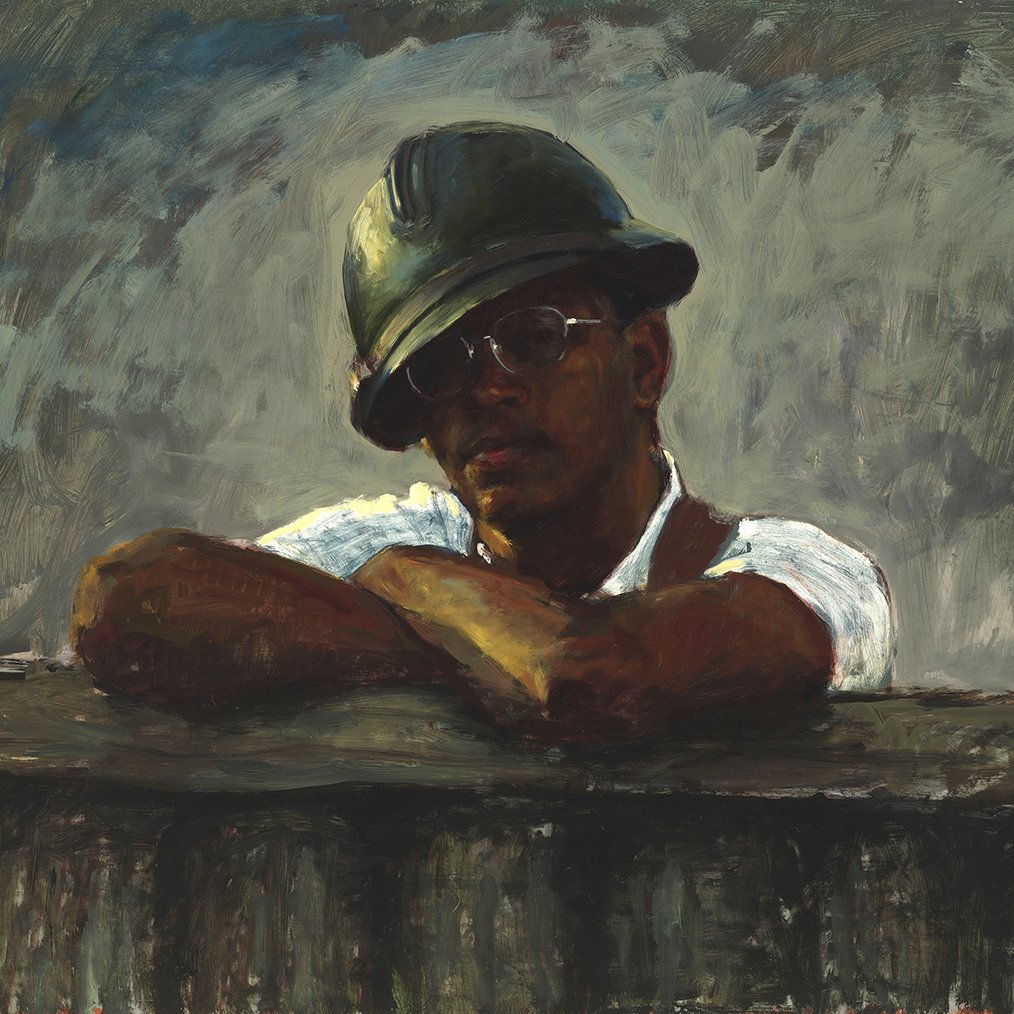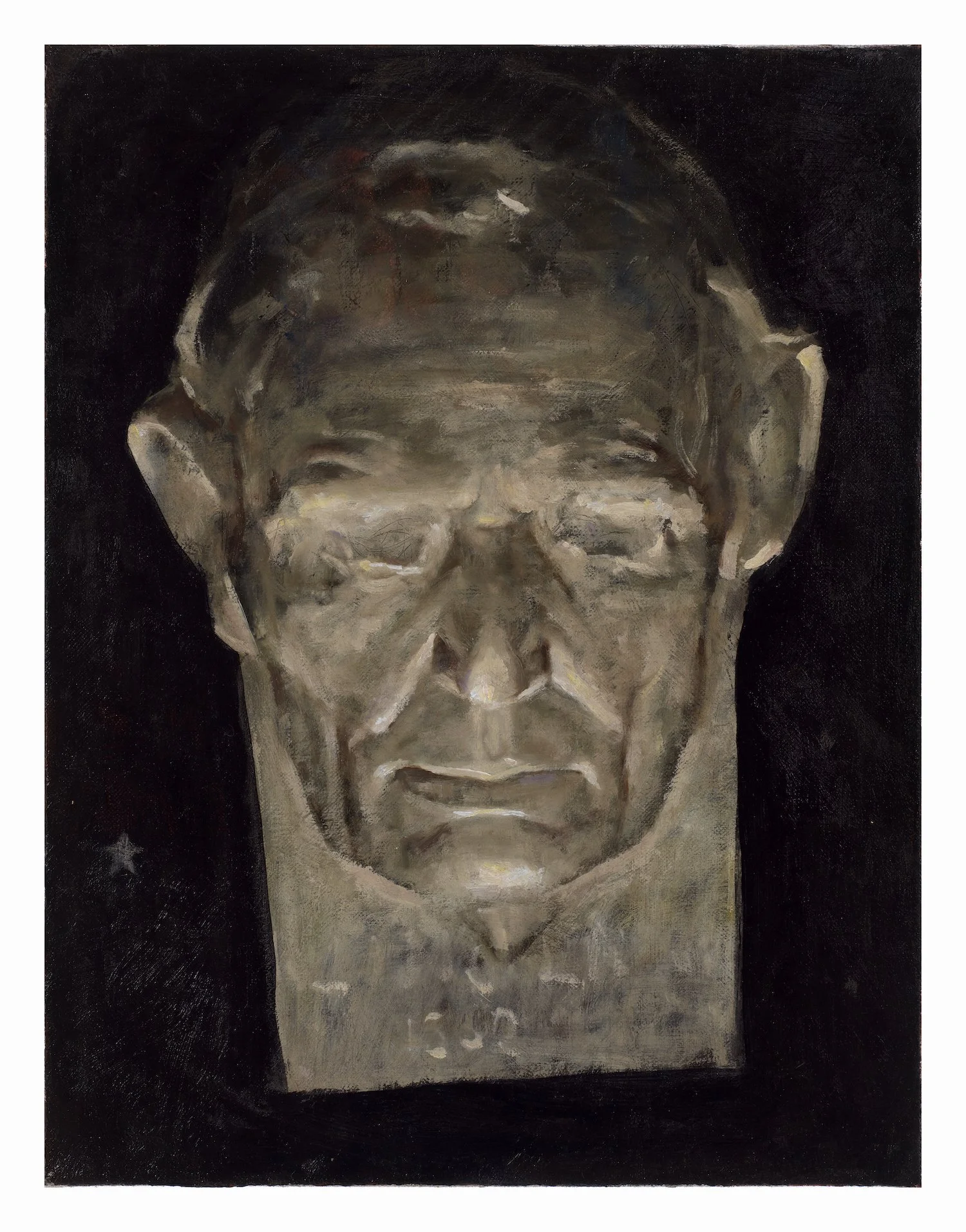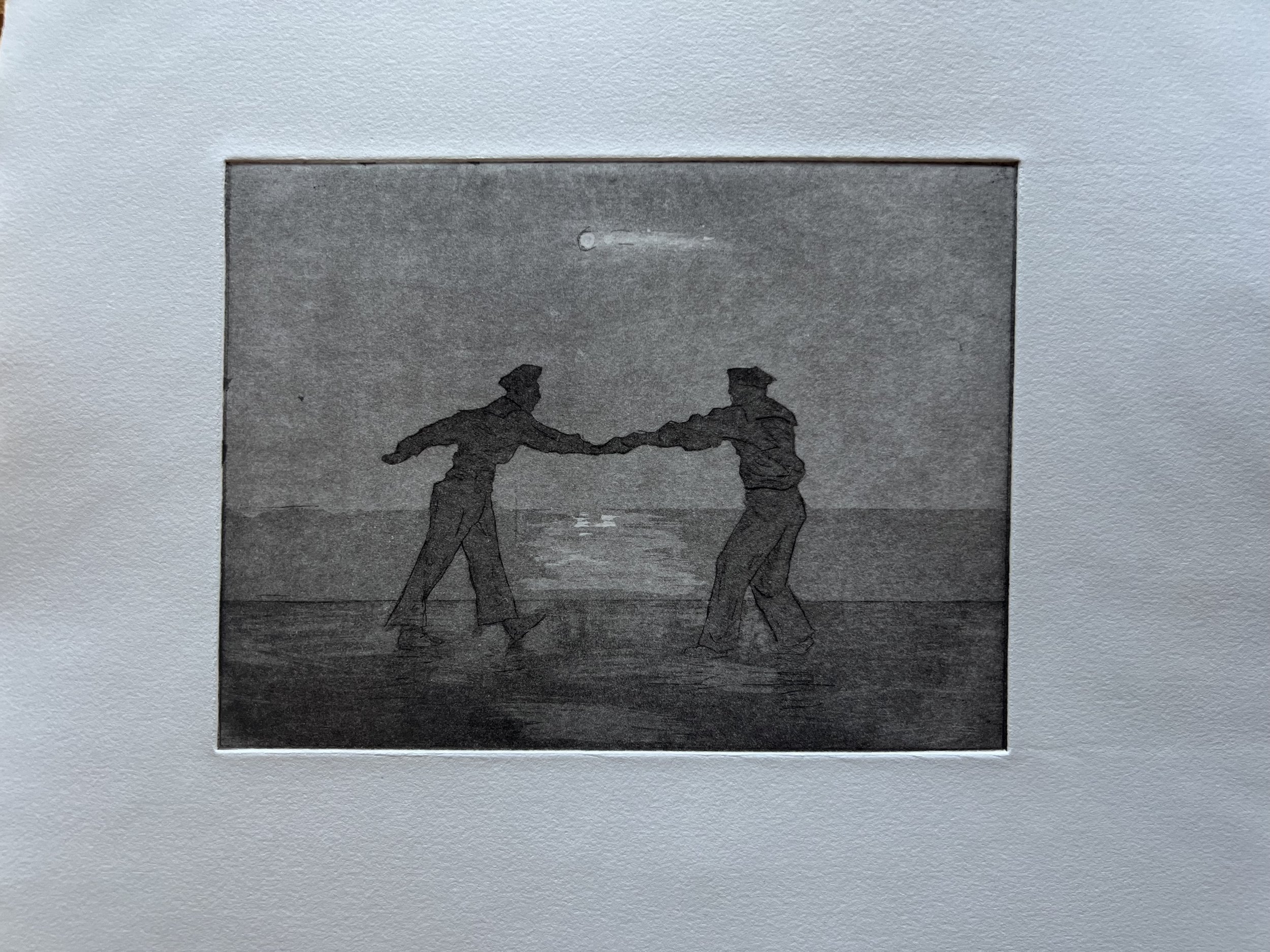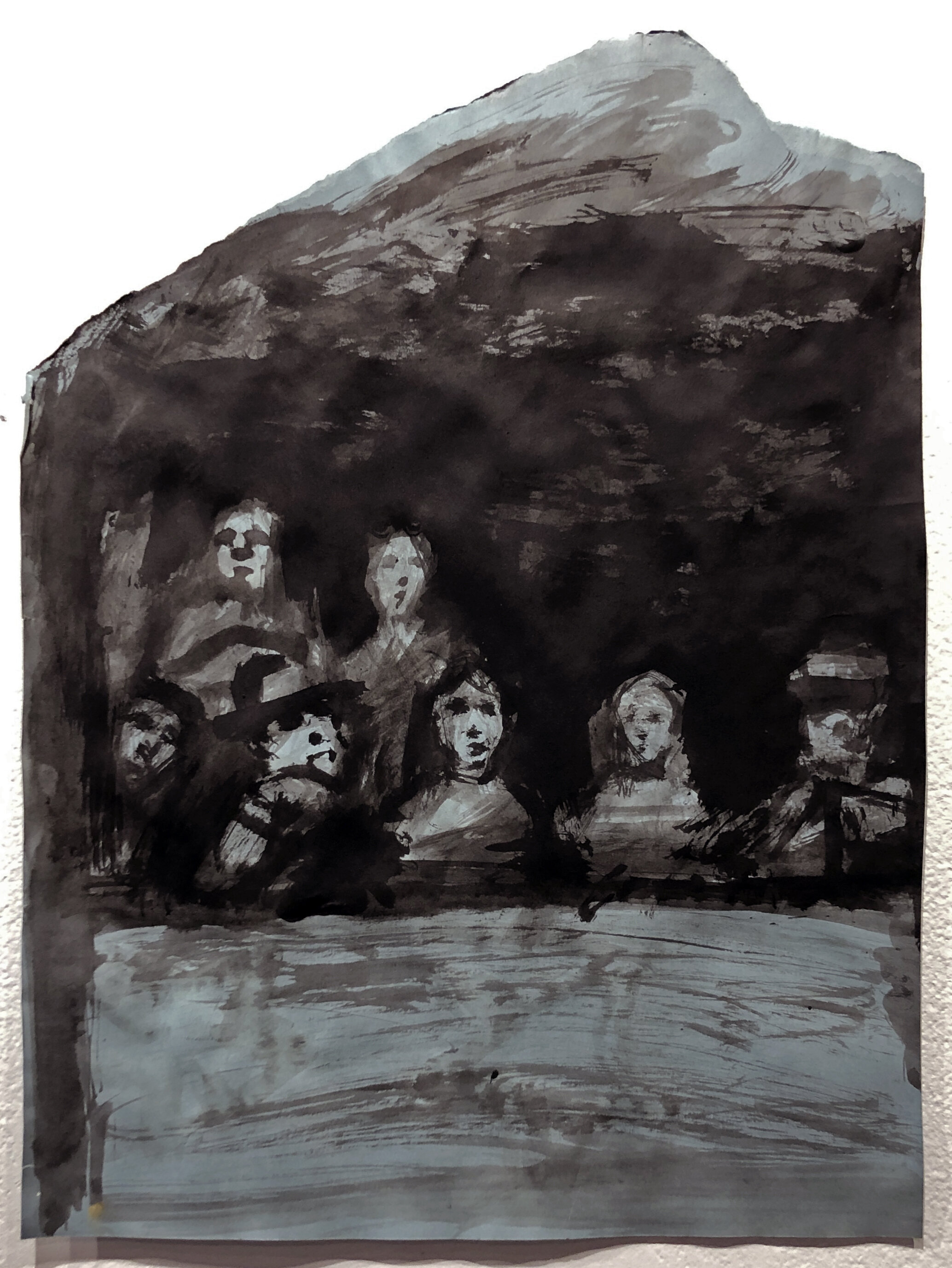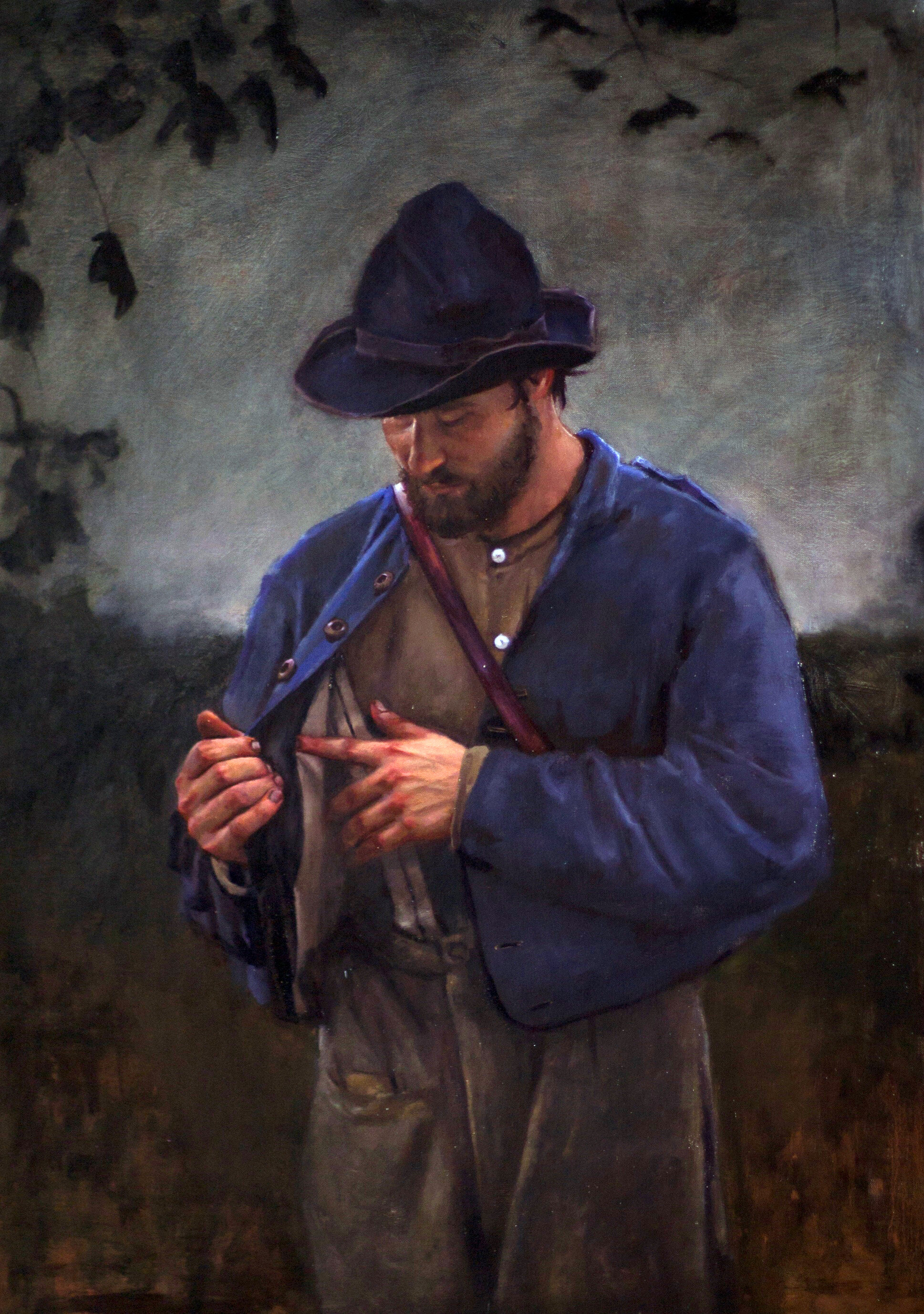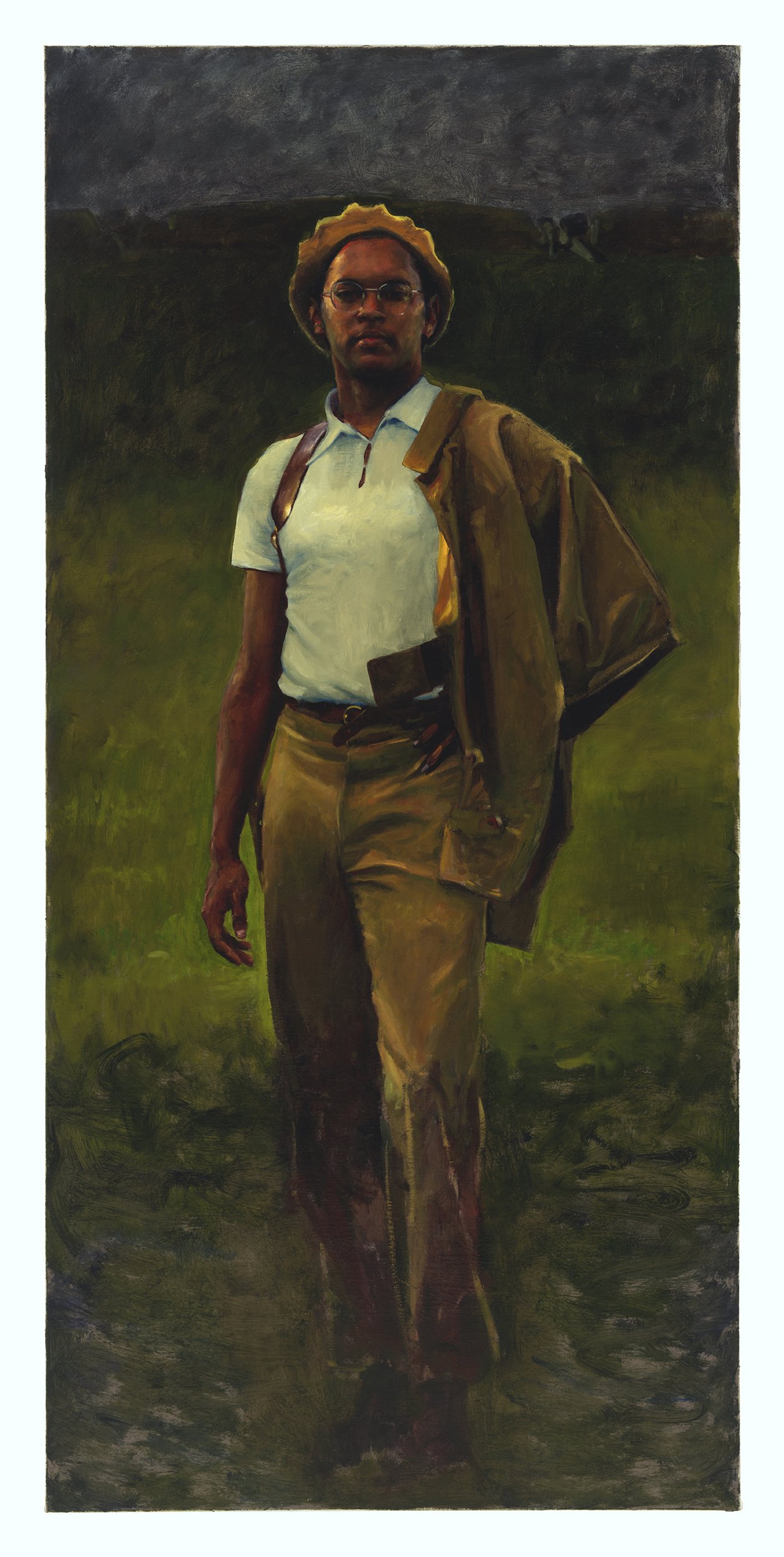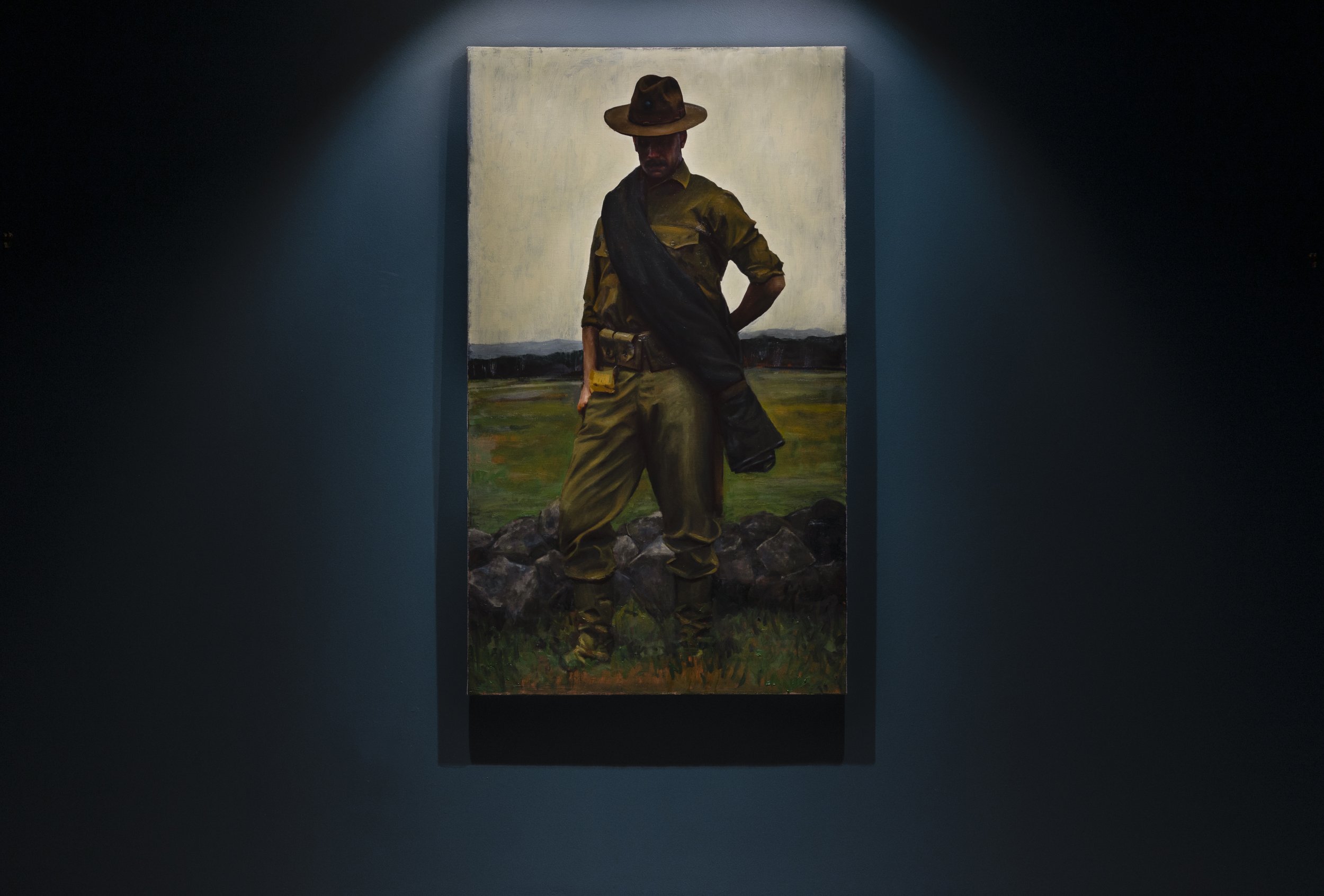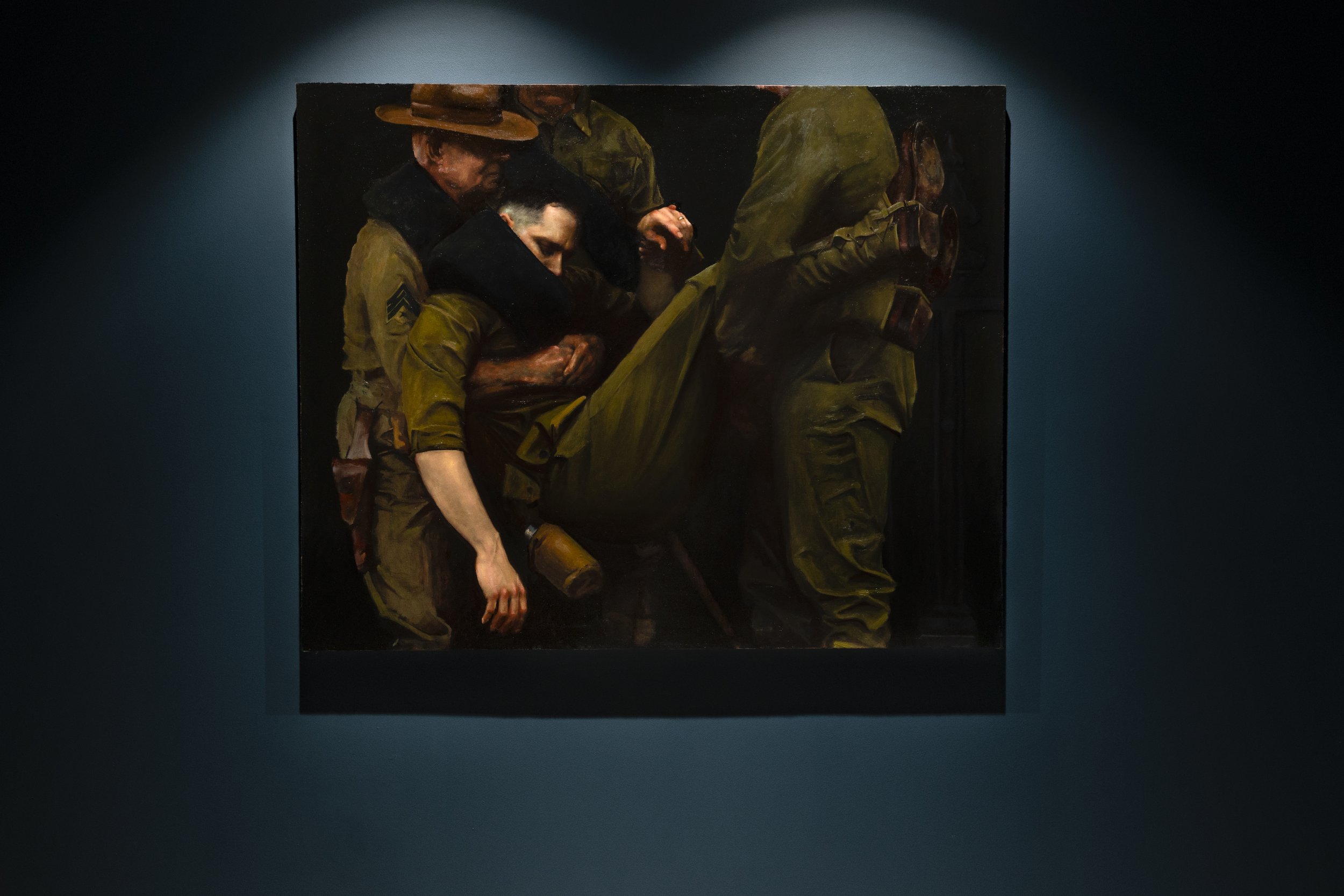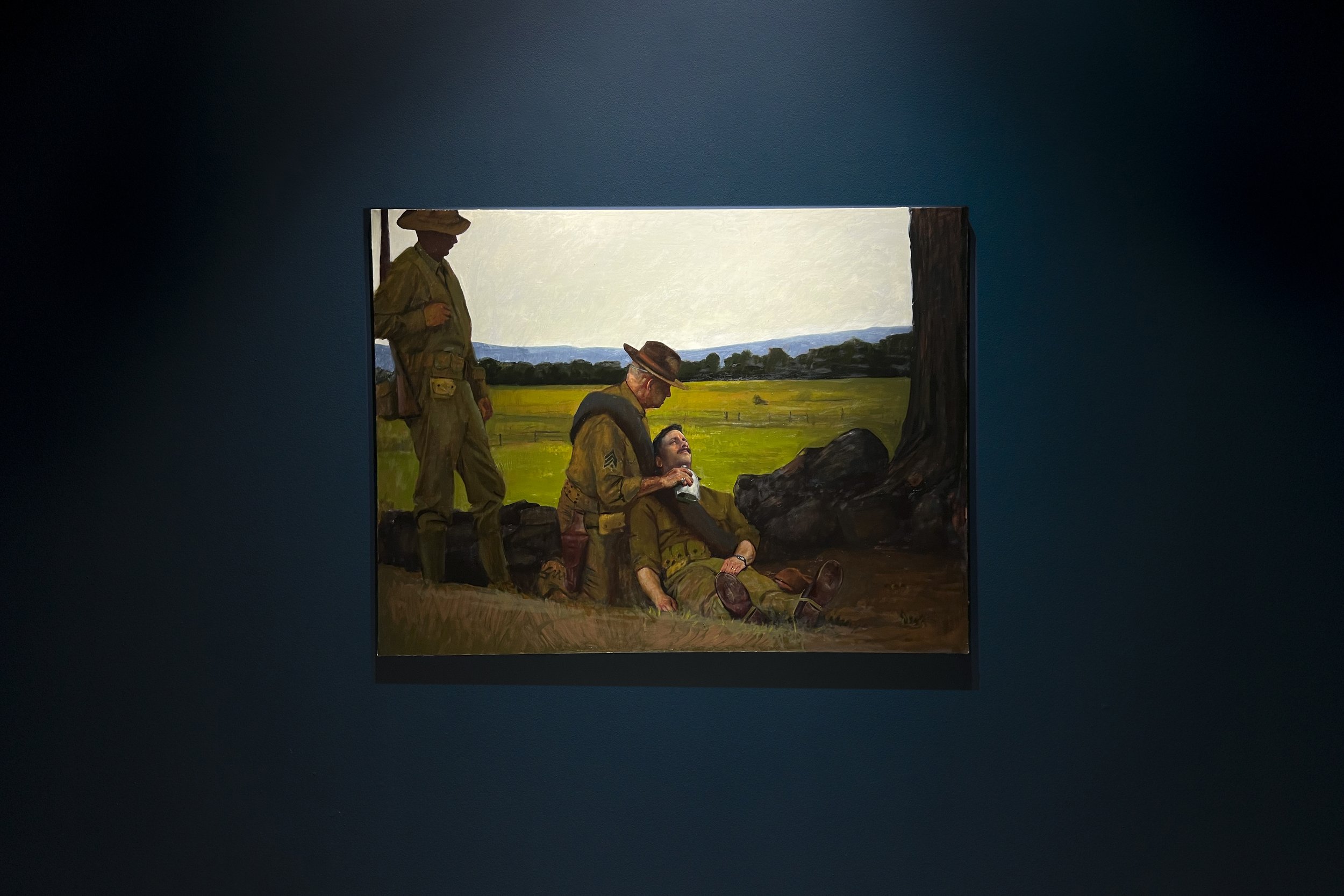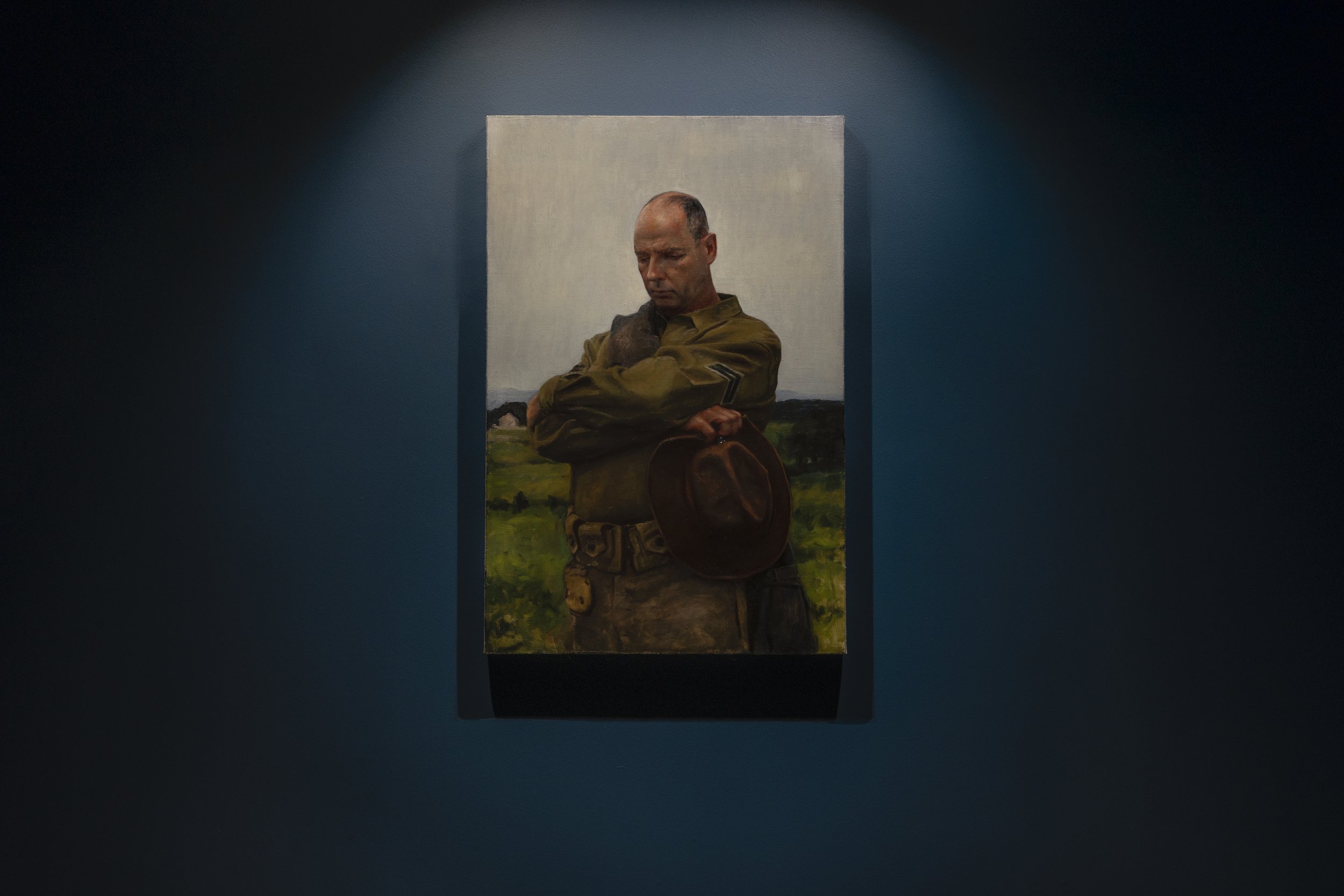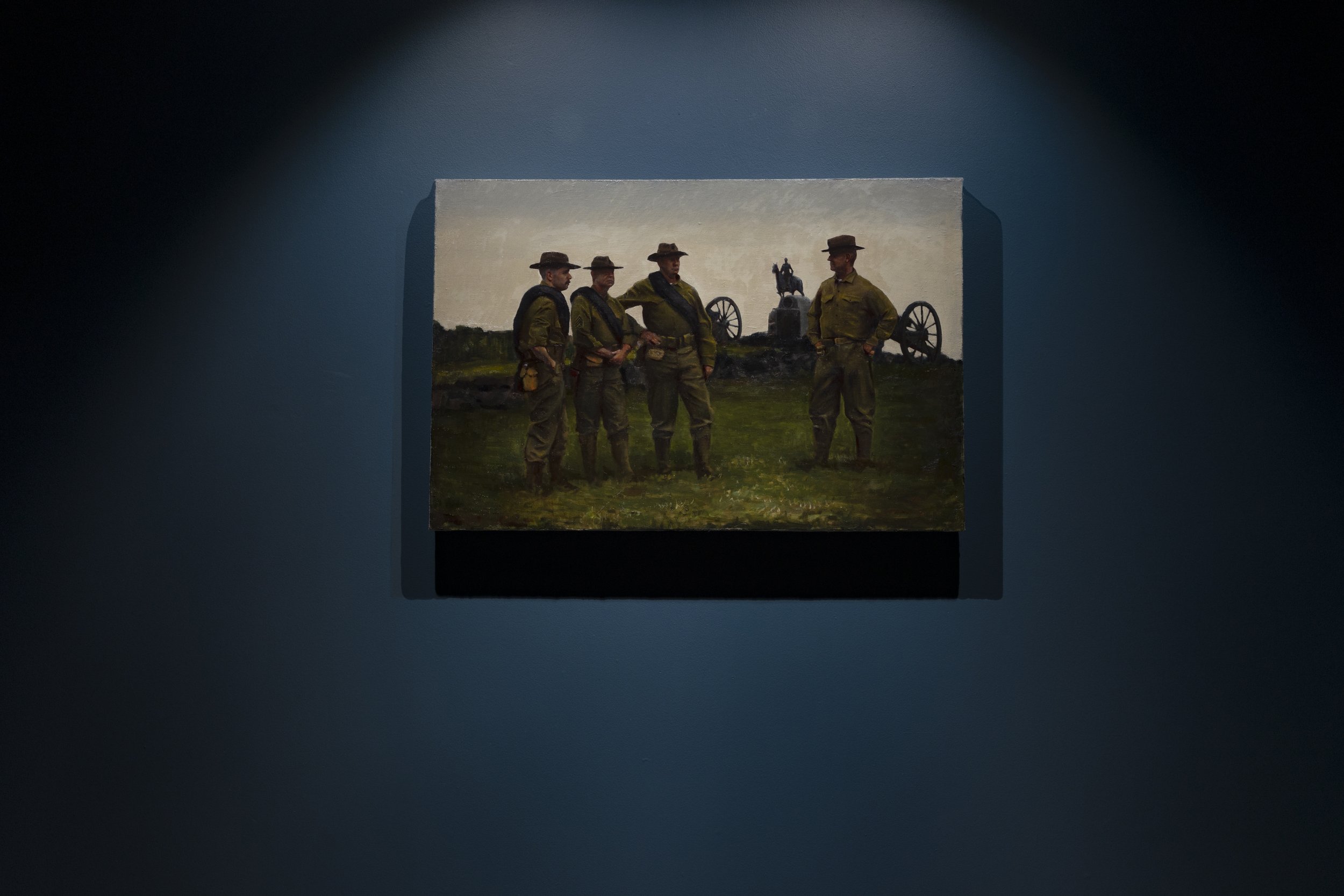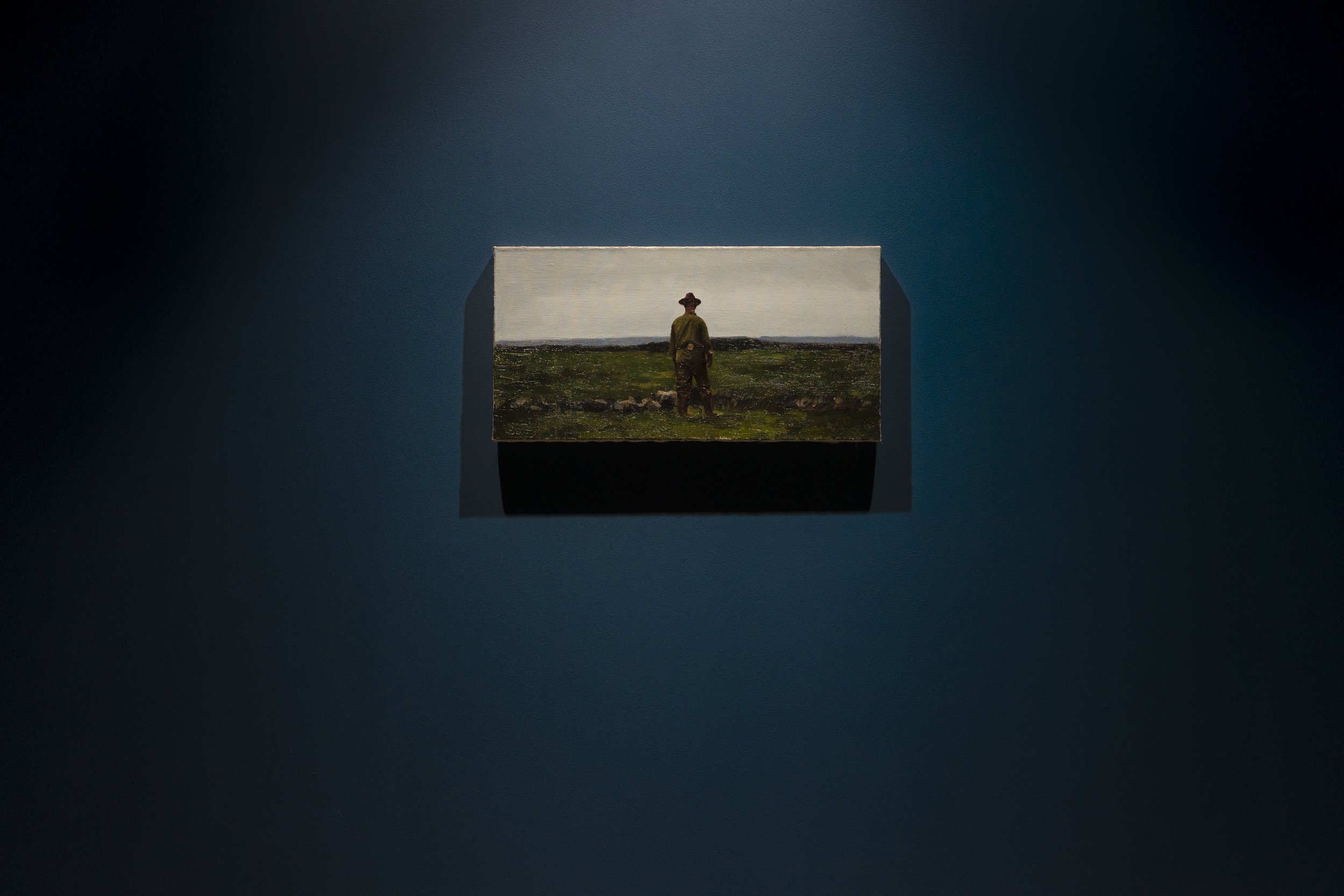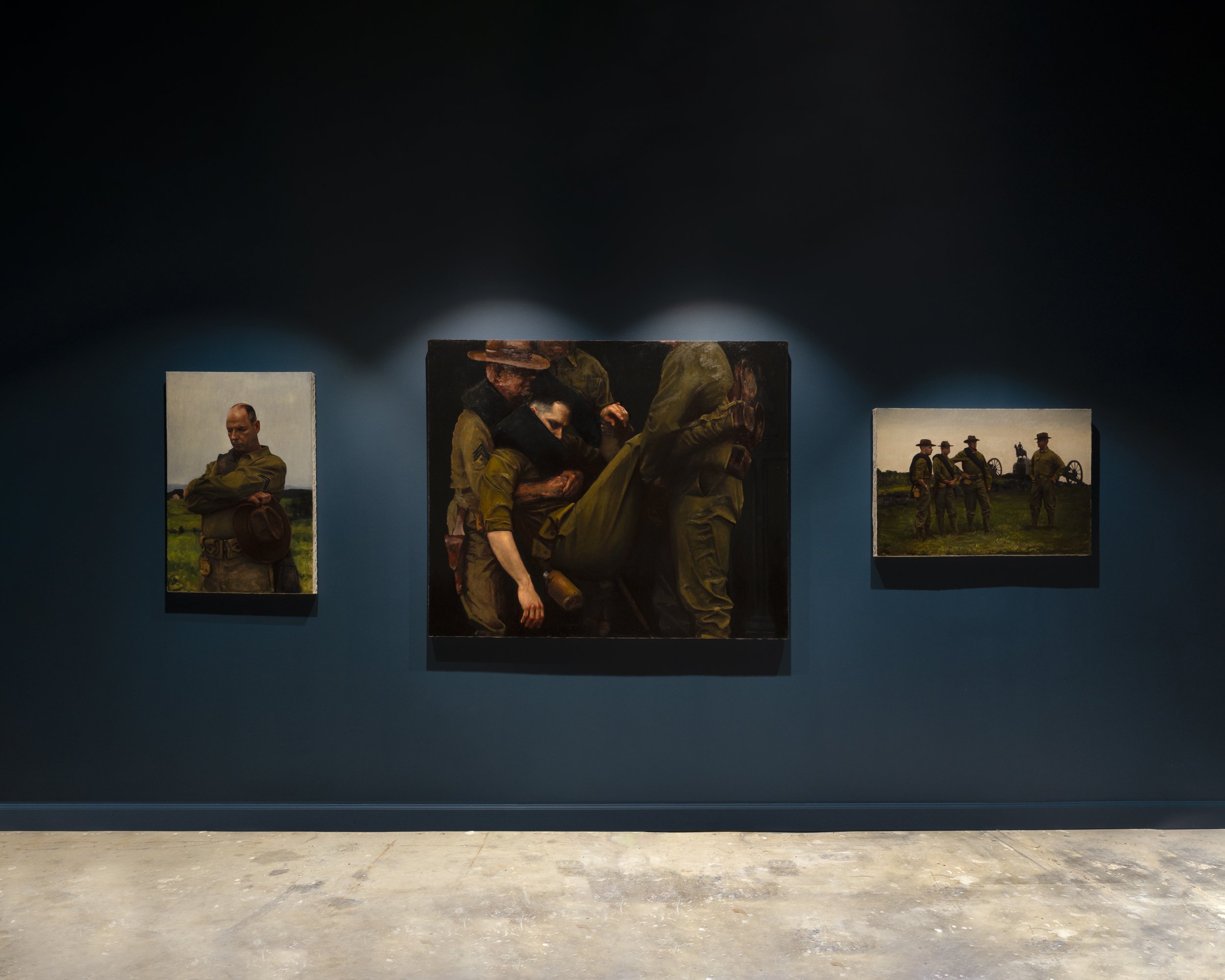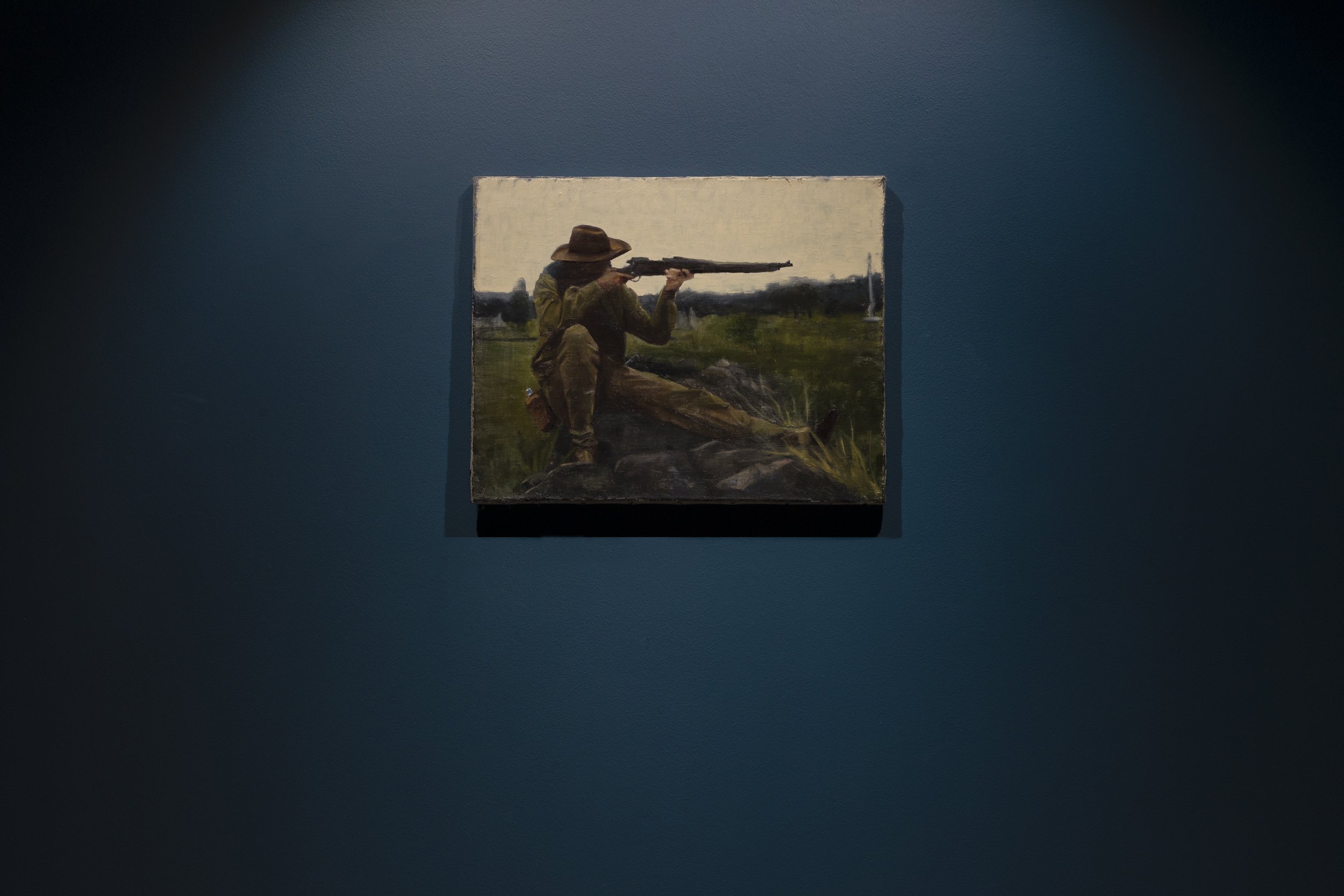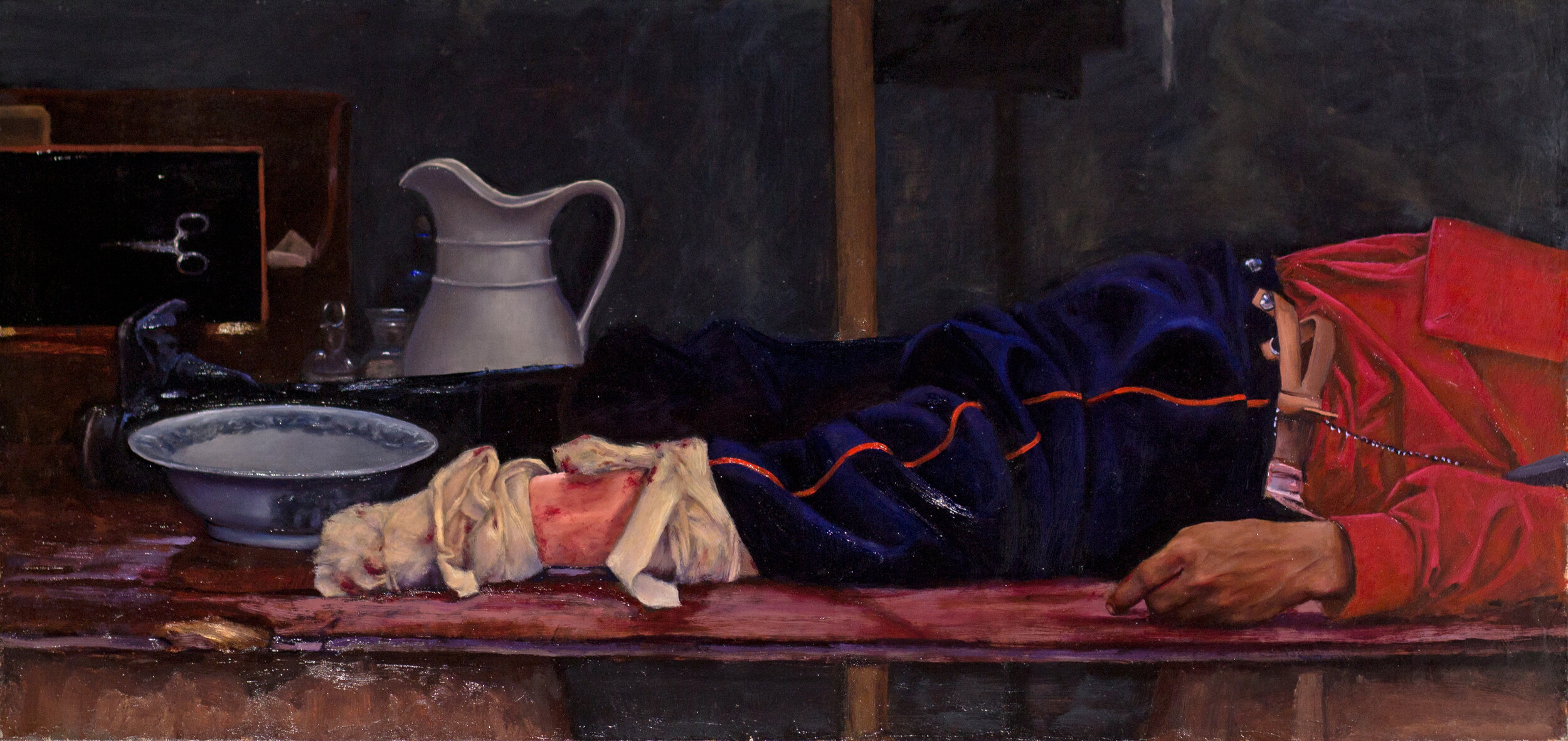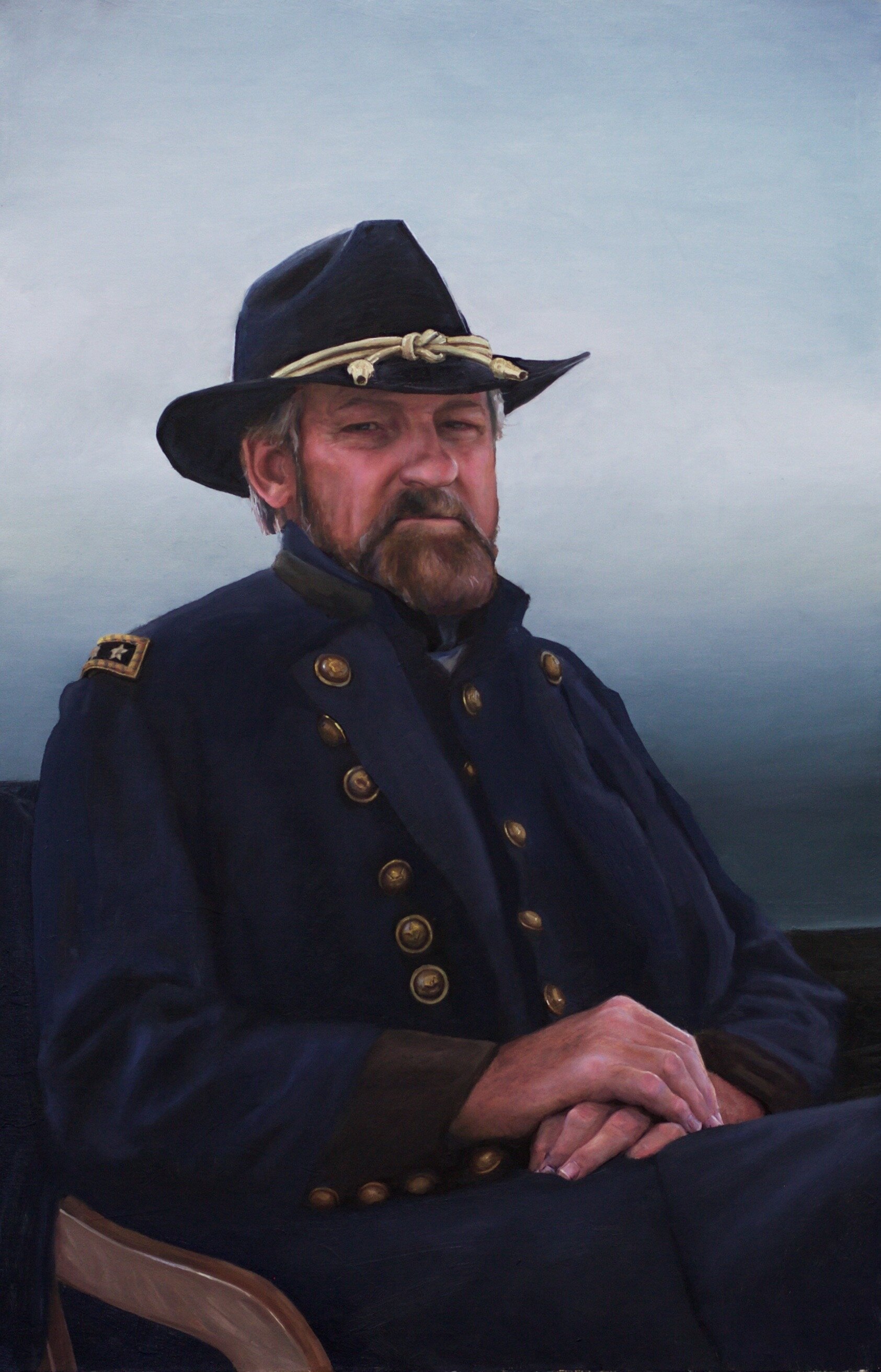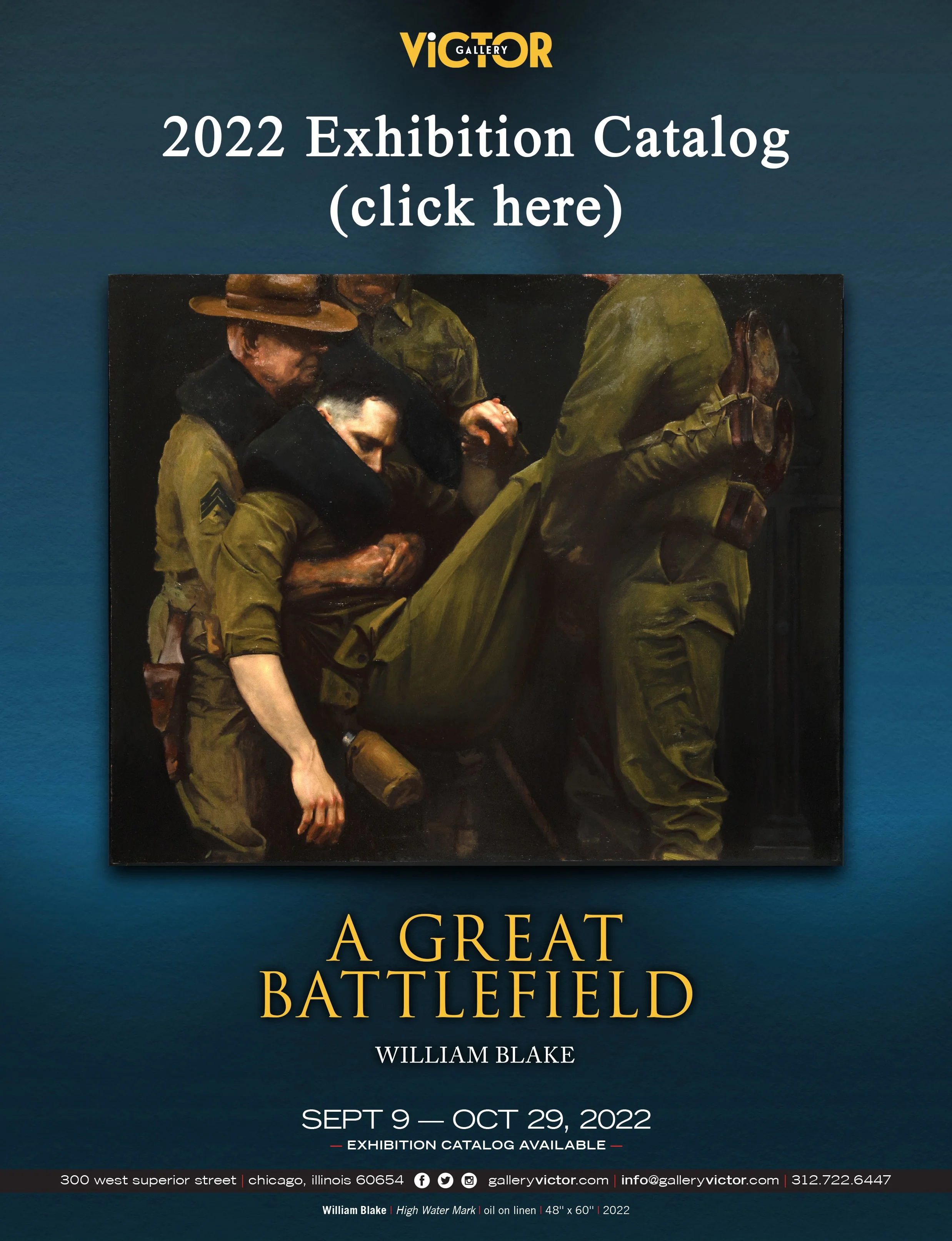William Blake
b. 1991, Oshkosh, WI
William Blake lives and works outside Chicago, IL. As a participant in Civil War reenactments across the country, he portrays the artist Winslow Homer. A graduate of the University of Illinois at Urbana-Champaign, he also holds a Master of Fine Arts from the Tyler School of Art at Temple University. He currently teaches Figure Drawing at Harper College. His work has been published in Fine Art Connoisseur, New American Paintings, The Chicago Tribune, and American Art Collector. He has been a resident artist at the Berkshire Painting Residency, the Vermont Studio Center, the Cuttyhunk Island Residency, and the Lincoln Legacy Residency.
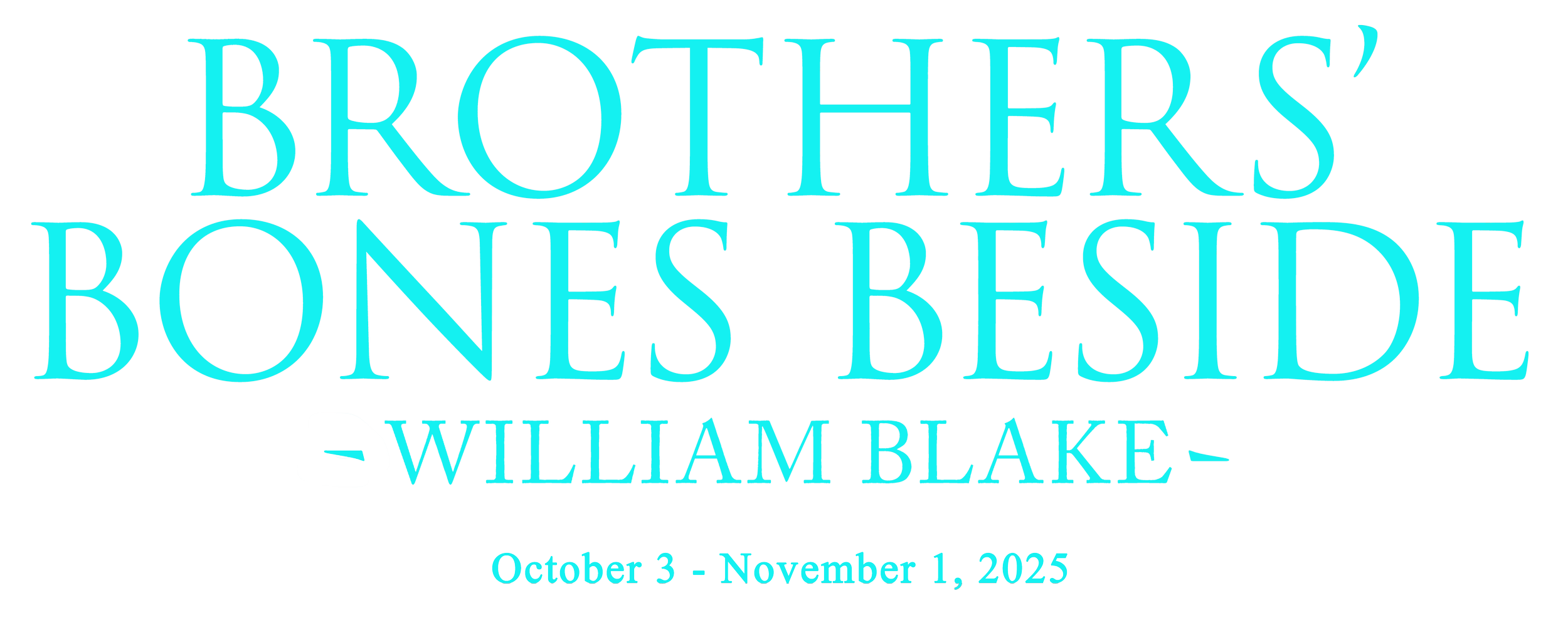
Includes:
Brothers’ Bones Beside, introductory essay
by TK Smith
A Revolutionary Paradox: George Washington’s Contested Legacy
by Abbi Smithmyer
Exhibition Catalog Available.
Click below to view or download.
To See a New Nation
oil on linen
80 × 54 inches
To See a New Nation depicts Jean-Antoine Houdon's statue of George Washington, installed in the Virginia State Capitol. At Washington’s feet lies the severed head of the Apollo Belvedere, a neoclassical ideal, used in 19th-century racial science to visualize white supremacy.
The painting collapses enlightenment ideology, neoclassical aesthetics, and American myth into a single fractured image. During the Civil War, Washington’s image was claimed by both Union and Confederate causes, each side projecting its ideals onto the Founding Father’s image. This contested symbolism reveals how images have been used not just to commemorate virtue, but to legitimize violence and power.
To Illinois
oil on linen
70 × 36 inches
Price: 16,000.
Blake’s painting imagines a quiet moment aboard the Sultana, a steamboat carrying Union POWs home at the end of the Civil War. Hours later, the vessel exploded, killing over a thousand passengers in what remains the deadliest maritime disaster in U.S. history.
Two identical figures, eyes closed, repeat across the surface. Modeled on a friend of the artist and Civil War reenactor, the doubling reflects Blake’s interest in memory not as linear but looping.
Rather than depict the catastrophe, To Illinois holds in paint, the moment of returning. The painting becomes a vessel of its own, a form of preservation.
Stag Dance
oil on linen
69 × 54 inches
Price: 18,000.
In the summer of 2024, on the Eastern Shore of Maryland, a father and son reenacted a Civil War “stag dance” at the Kent Cultural Alliance in Chestertown. These all-male dances, where Union soldiers paired off and danced in barns, tents, or on ships, were both celebratory and contested. In one reported case, soldiers fought at the entrance of a barn for the chance to dance together.
This painting reenacts a stag dance aboard the deck of the USS Monitor, with father and son naval reenactors in a waltz.
The work invites questions about nostalgia, what we choose to remember, re-perform, or preserve. Here, masculinity and longing are filtered through layers of play and inheritance. The stag dance becomes less about war than about the fantasy of it: a private romance with history, rehearsed and passed down.
Father Abraam
oil on linen
18 × 14 inches
Price: 4,000.
This painting depicts Abraham Lincoln’s 1860 life mask, cast by sculptor Leonard Volk. Unlike heroic statues, the mask holds the unidealized imprint of Lincoln’s face in plaster, its weight, asymmetry, and age. Painted from observation, the portrait treats the cast not as a relic but as a sitter and a copy.
The painting’s title comes from the Union recruitment song We Are Coming, Father Abraam which has the lyric that gives the exhibition it’s title, “To lay us down for freedom’s sake, our brothers’ bones beside.”
After Appomattox
oil on linen
24 × 48 inches
Price: 8,500.
This painting is a copy of After Appomattox (1870s) by John Adams Elder, a Confederate veteran and artist trained by Emanuel Leutze, known for Washington Crossing the Delaware. Elder’s image became a central Lost Cause icon, later transformed into a monument honoring Confederate soldiers in Alexandria, Virginia, until its removal in 2020 after the murder of George Floyd.
Here, the original image is copied and layered with fresh-cut flowers, from Mother’s Day bouquets to art historical references.
This work explores how we confront and inhabit difficult histories. Rather than reclaim or erase Elder’s image, it responds to it, “after” as both succession and interruption. The flowers act as a gesture of mourning and masking, marking the figure without obscuring its presence, allowing tension between remembrance and refusal.
The title evokes the aftermath of the Civil War’s official end, highlighting the ongoing echoes of violence and unfinished legacies. This painting sits with the weight of history, probing what painting can still do to hold, challenge, and engage with the past.
Teeth
oil on linen
12 × 10 inches
Price: 1,500.
George Washington’s dentures, painted from historical references. They were made from animal and human teeth.
Head 3
oil on linen
12 × 10 inches
Price: 1,800.
Copies after a cast of the Apollo Belvedere, painted from life. Once thought to be the ideal male form, Apollo became a model for whiteness in 19th-century racial science.
Head 2
oil on linen
12 × 10 inches
Price: 1,800.
Copies after a cast of the Apollo Belvedere, painted from life. Once thought to be the ideal male form, Apollo became a model for whiteness in 19th-century racial science.
Head 1
oil on linen
12 × 10 inches
Price: 1,800.
Copies after a cast of the Apollo Belvedere, painted from life. Once thought to be the ideal male form, Apollo became a model for whiteness in 19th-century racial science.
Head 4
oil on linen
12 × 10 inches
Price: 1,800.
Copies after a cast of the Apollo Belvedere, painted from life. Once thought to be the ideal male form, Apollo became a model for whiteness in 19th-century racial science.
Father Time: John Brown and Baby New Year
etching
6 × 12 inches
Price: 450.
This etching depicts the abolitionist John Brown as Father Time, wings outstretched, cradling Baby New Year atop the vacant plinth where the Lee and Jackson monument once stood outside the Baltimore Museum of Art. The statue was removed in 2017; its base remains a scarred surface layered with protest graffiti, a palimpsest of resistance.
Brown is imagined here as both martyr and timekeeper, a figure whose legacy moves across generations. The image draws on Frederick Douglass’s reflection on Brown’s devotion: “Mine was bounded by time, his stretched away to the boundless shores of eternity.”
Sketch for A Grand Review II
india ink on blue paper
18.5 x 13.5 inches
Price: 550.
Incredulity
oil on canvas
40 x 30 inches
Price: 5,200.
Caravaggio painted The Incredulity of St. Thomas with Christ looking down as he pilots Thomas’ hand to his side. Not looking at Thomas or the others, but to his wound. He seems interested in the proof of his embodiment. He wants to know that this is real. He too, questions his body, his life and death.
Reenactment is a material culture where the feel of authentic wool is transformative. The closer you can recreate the “kit” of the authentic soldier the closer you are to that past. In the pursuit of touching the past there are questions- Is this real? Did this happen? Is this me? Is this us? The gesture of piloting a finger into the side are these repetitive questions.
Salud Johnny
oil on linen
76 x 36 inches
price: 11,000.
From the series, The Lincolns: Portraits of Hugh Goffinet
Ramparts
oil on linen
24 x 30 inches
SOLD
From the series, The Lincolns: Portraits of Hugh Goffinet
No Parasan
oil on linen
48 x 30 inches
price: 7,500.
From the series, The Lincolns: Portraits of Hugh Goffinet
William Blake: A Great Battlefiled, 2022
For his second exhibition with Gallery Victor Armendariz, William Blake presents A Great Battlefield, a collection of new paintings depicting US Marines at the Gettysburg National Military Park. A Great Battlefield, takes its title from Lincoln’s Gettysburg Address which poetically looks to the battlefield as a site of rebirth. Following the tradition of nineteenth-century American history painting, Blake uses oil and linen to depict US Marines’ reenacting the 1922 Marine Corps at the Gettysburg battlefield. After the First World War, the Marine Corps hosted summer exercises and reenactments at Civil War battlefields. The largest and most attended of these events was the 1922 Gettysburg event which consisted of an accurate (no tanks, planes) reenactment of Pickett's Charge. In the summer of 2020, William Blake organized a reenactment in cooperation with the United States Marine Corps Historical Company. who posed for this series of paintings. Blake collapses histories and myths into a contemplative look at our Battlefield.

